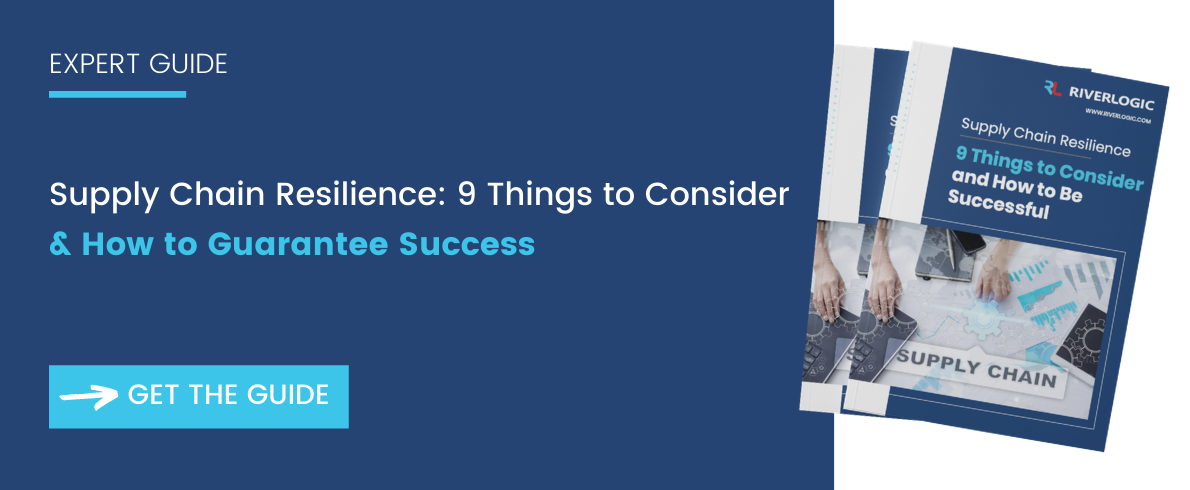Before the disruptions caused by COVID-19, many businesses held the view that minimizing supply chain cost was crucially important. Now, according to DHL’s white paper, “Post COVID Supply Chain Recovery,” many have realized that supply chain resilience is more important.
In fact, the white paper points out that many organizations were already starting to focus on supply chain resilience strategies following the numerous natural disasters that disrupted supply chains in the Far East.
What Is Supply Chain Resilience?
In our recent white paper on supply chain resilience, we explained that supply chain resilience refers to the ability to recover readily from disruption. This includes an ability to bounce back, adapt to new policies and develop ways of mitigating supply chain risk.
A simple example of a resilient supply chain would be one that employs multiple sourcing strategies to ensure continued supply should one or more supply routes be cut.
Naturally, this implies suppliers should be independent of each other with particular care being applied to ensure that second and third tier suppliers differ and don’t come from the same region.
While this is going to be more expensive, such a strategy could ensure continuous supply in the event of major disruption.
The Unexpected Impact of COVID-19 on Supply Chains
To say that few anticipated the extent of disruption due to COVID-19 would be an understatement. In the early stages of the pandemic, most supply chain managers believed disruptions would be short-lived and temporary.
The reality was completely different, and six months later, international trade, travel and business continued to be strangled. In the U.S., there are even signs of a second COVID-19 wave that could further ruin manufacturing capability.
It has taken COVID-19 to forcibly bring home the need for supply chain resilience. Additionally, research by McKinsey Global Institute shows that companies can typically lose a full year’s profit when hit by unexpected disruption and that, on average, most companies experience at east a month of supply chain disruption every 3.7 years.
These events point to an urgent need to develop appropriate supply chain resilience strategies.
Crucial Steps for Building a Supply Chain Resilience Plan
Developing supply chain resilience entails a complete review of your supply chain, how it functions and creating appropriate supply chain strategies that support resilience. These include:
1. Supply chain visibility
Map out your supply chain and identify Tier 1, Tier 2 and Tier 3 suppliers. Implement systems that depict supply chain visibility throughout the supply chain, allowing early identification of supply chain issues that could lead to disruption.
2. Digital transformation
Consider integrated digital solutions that allow everyone to see the same version of the truth, enhancing visibility throughout the organization. Consider setting up a supply chain digital twin to evaluate supply chain resilience strategies.
3. Supplier location
When considering resilient supply chains, it’s essential to bear in mind that long, complex supply chains are more readily disrupted than short, simple ones, especially those in low-cost countries with relatively unsophisticated infrastructure.
4. Adopt dual sourcing policies
While inevitably more expensive, consider multiple suppliers, as this means you can maintain supply even if one is forced to suspend production.
5. Focus on agility and adaptability
As COVID-19 has demonstrated, it’s impossible to foresee every eventuality, but if you develop agile and adaptable systems, it may be possible to develop workarounds when the unexpected happens.
Invest in supply chain simulation solutions that allow you to preempt what may happen and devise optimal solutions.
Using Prescriptive (Optimization) Modeling to Create Supply Chain Resilience
Supply chain complexity remains a fundamental issue affecting any attempt at enhancing supply chain resilience. It’s particularly difficult to sift through masses of information and determine the best supply chain resilience strategies.
Optimization modeling that provides forward-looking, prescriptive insights offers an effective solution — some would argue it provides the only solution. It allows you to create mathematical models that accurately reflect an end-to-end value chain exactly as it stands today, while also running detailed scenarios for future possibilities.
You can evaluate different supply chain planning scenarios and determine the best supply chain resilience strategies for your organization, instead of using standard strategies that 1) change over time and 2) might not fit with your specific business objectives or conditions.




